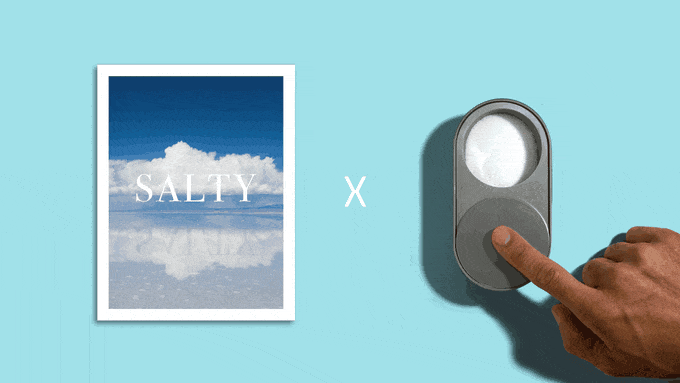inspirations
Looking at work of different designers and taking into account their usage of the material and analysing it.
back<
Israeli artist Sigalit Ethel Landau, who submerges both handcrafted pieces and everyday items in the hypersaline water.
The GEOtube is a new kind of urban sculptural tower. Gravity-sprayed with adjacent Persion Gulf waters, its building skin is entirely grown rather than constructed; is in continual formation rather than fully completed; and is created locally rather than imported. The world’s highest salinity for oceanic water is found in the Persian Gulf (and the Red Sea) – local salt water is supplied to GEOtube via a new 4.62 km buried pipeline and misted onto the tower’s exposed mesh. As the water evaporates and salt deposits aggregate over time, the tower’s appearance transforms from a transparent skin to a highly visible white solid plane. The result is a specialized habitat for wildlife that thrives is this environment, and an accessible surface for the harvesting of crystal salt.
The Salt Project is a biomimetic attempt to create architecture using seawater in the desert. By using locally available resources we can grow plants and create architecture without producing waste.
Himalayan salt lamps are essentially hunks of rock salt mined from the Himalayas (typically in Pakistan) that have been hollowed out to allow a space for a light bulb or heating element. When they are on, they give off a soft, red glow.
"Salt crystal is naturally hygroscopic, absorbing water molecules from the air. You will notice if your salt lamp remains unlit for long periods of time, it will begin to 'cry.' The heat from a small light bulb keeps these beautiful crystals dry and in turn releases negative ions (the healthy ones found in abundance in places like oceans, waterfalls, even your shower) into the air," according to the site.

Motoi Yamamoto is fascinated by the interconnectedness of living things and salt’s literal and symbolic role in the pattern of life and death. He creates stunning labyrinths, tunnels and abandoned staircases out of salt.
After he finishes displaying an installation, Yamamoto requests the salt is returned to the ocean, making its journey full circle. His impermanent sites of beauty are haunting meditations on life, death and memory, evoking Tibetan Buddhist practices where a work is destroyed after it is completed. Full of starts and stops, twists and turns, Yamamoto’s labyrinthine salt sculptures eventually become one with the Earth.

The Salty project explores how salt still connects us. We feel better when we eat together, when we cook with each other, and when we share stories.
Salty is a vessel to cook with and pass salt at the table + a print magazine all about salt.
Salt has defined human society for centuries. Ancient trade routes, also called “salt roads”, were once built to transport salt; today we use salt to melt icy highways. Salt has always been valued for seasoning fresh food, and remains invaluable for preserving food. Salted meat and fish last longer, so having salt means gaining time. Even our modern English word ‘salary’ is derived from the ‘salarium’ Roman soldiers received – payment in salt, or their monthly allotment of salt.


Salt is a fun, experimental tool to use when watercolor painting. Salt painting, or what is also commonly called salt technique, is very easy to do, and the results can be surprisingly wonderful.
Of course, the results can also be surprisingly not wonderful. When using salt with watercolor, you're never going to be completely in control, but there are a few things you can do to gain the best results possible.
There are infinite watercolor effects that are possible when using salt with watercolor